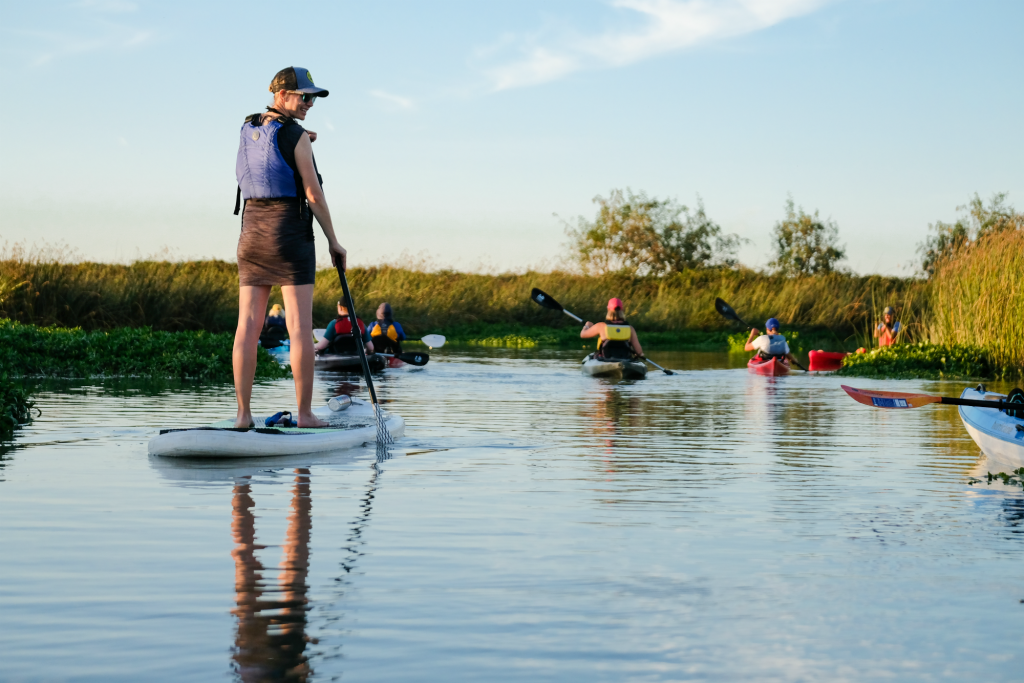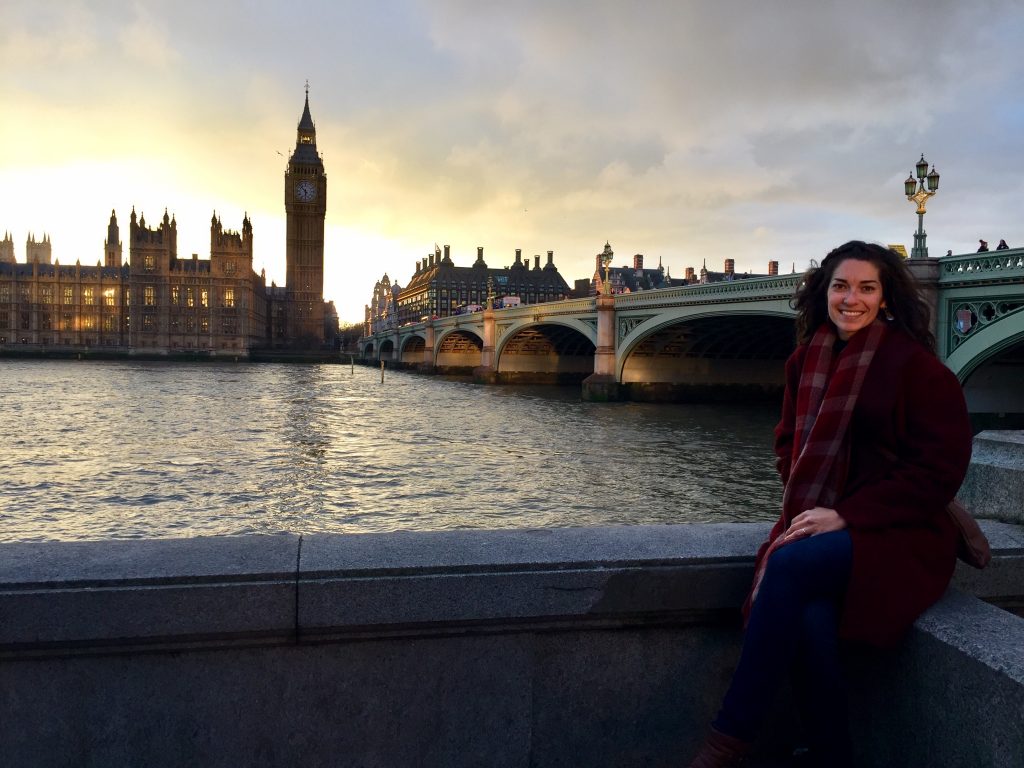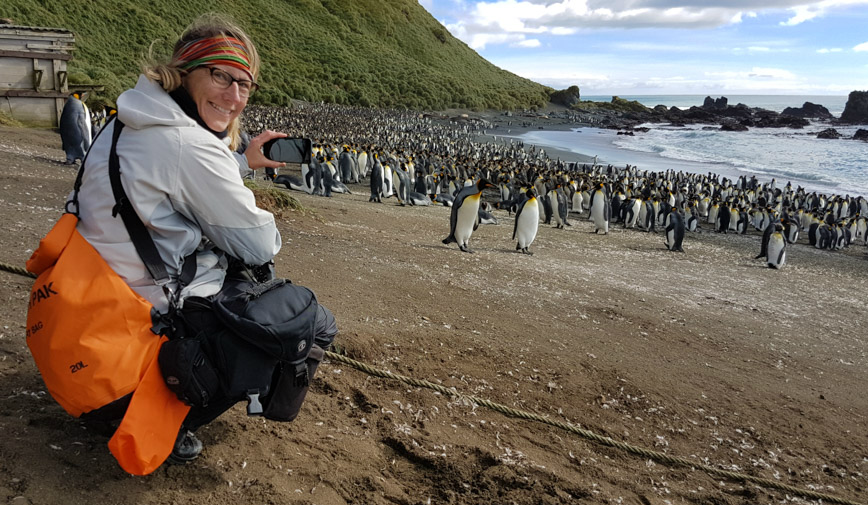With the proliferation of social media comes a need for adventure travel businesses to find new and creative ways to reach prospective customers and spread the word about their products, services, and destinations. One way to do that is through the use of influencer campaigns, a relatively new and multifaceted approach to breaking through the digital noise and multitude of messages everyone encounters every single day.

What is an Influencer?
An influencer is an actual person who has a following via a social media channel and/or his/her own blog or podcasts. The following is loyal to that person, trusts his/her opinions, and will take action based on it.
There are three types of influencers: mega, macro, and micro. Mega influencers are generally celebrities, musicians, or athletes, and they have hundreds of thousands or even millions of followers. If a business is looking for large impressions and brand awareness, the megas may be right for them. However, it should be noted that often less action is taken based on megas’ recommendations or noting of a brand.
Macro influencers are bloggers, Instagrammers, or other media or journalists. Macros generally have tens or hundreds of thousands of followers. They can be excellent for niche topics such as family adventure travel, biking travel, or culinary travel. Macros have better engagement than megas because their followers are interested in their niche focus or theme.
The last, and very interesting, type of influencer is micro. These can be a company’s staff members, guides, or travelers. Usually these influencers have smaller audiences — less than 10,000 — but engagement is very high because these influencers generally have real-life relationships with their audiences.
These built-in audiences serve an important opportunity for many small adventure travel businesses that simply do not have the time to learn about social media or new media strategies, nor the budgets to hire an employee to focus on these efforts full time. Influencers are experts in social media, however, and they take the guesswork out of staying on top of the latest media trends.
Choosing the right influencer is essential to a company’s success in this area. “This is where networking and researching really come into play, because if you want the greatest results, the most important elements of an influencer campaign is working with those who are truly interested in your product, who have the audience or platform you want to target, and who can work within your budget,” said Jackie Nourse, an Adventure Travel Trade Association (ATTA) media member and influencer.

Getting Started with Influencer Marketing
For adventure travel businesses just getting started with influencer marketing, it makes sense to focus on macro and micro influencers. They are accessible, more affordable, and more often going to trigger an action. Plus, micros can amplify macro influencers. They can be found much the same way one would find an employee — through networking, recommendations, and relationship-building opportunities.
One of the best things about working with influencers is the flexibility of services they offer. In the adventure travel space, there are many ways this can work as influencers experience a trip/tour, accommodation, gear, or other branded products or services. In many ways, influencers can be engaged much like marketing consultants. Among the services they may provide are:
- Social postings before, during, and after the trip.
- Photography, video, or written content after the trip.
- Instagram takeovers, whereby the influencer posts photos and text on the company’s account.
- Twitter chats, webinars, or podcasts.
- Contests or campaigns held on the influencer’s sites.
- Serving as a brand ambassador, which means the influencer is compensated regularly to serve as a spokesperson for a brand.
- Contributing to review sites or being accessible as a referral for clients who want to talk to someone who has experienced a company’s product, trip, or brand.
- Future marketing opportunities. Because a relationship has already been established and an influencer is familiar with a company, he or she will be primed and ready to work again on another project.
“The opportunities are only as limited as your creativity,” she continued. “It’s an opportunity to get your product, experience, or destination in front of a new audience in a very authentic way that won’t appear like an ad. And when it’s done right, you’ve now got an influencer who is an ambassador for your brand who’s answering questions and giving advice about your services.”
This may be the most valuable aspect of working with influencers. Not only are they able to deliver a message in a variety of ways, but they can be utilized over a longer duration of time. “I’d like companies to think longer term,” Ott said. “This doesn't have to be a one-off thing; it can be a long and lasting relationship that continues to grow and provides benefits long into the future. The relationships just get better and more creative the more you work together.”

Logistical Details
Once a brand establishes a relationship with an influencer and has discussions about a campaign’s needs and goals, then the question of budget and compensation will arise.
Most likely, an influencer will require the trip or experience be covered as well as airfare. Beyond this, there are various ways businesses can create relationships. Compensation could be a daily rate from $0 to $500 USD per day. The compensation could include requiring the influencer to participate in post-trip webinars or Twitter chats, or become an ambassador. Additionally, compensation could be project-based or based on trip referral commissions. There are many ways to make this work, and it all depends on the influencer as well as the company and its needs.
“The biggest mistake is not understanding the need for a budget when working with established influencers,” Nourse said. “Asking someone to experience your product and then create expert content to share that product with their own loyal following is marketing. Budgets will vary greatly depending on the project, influencer, and audience size, but they should be respectfully considered.”
Keep in mind that many of an influencer’s followers are often in the “dreaming” phase of trip planning as they browse through Instagram images and read blog posts about experiences. “Influencers are typically speaking to people at the beginning of the sales funnel. They provide the initial inspiration for their regular readers,” Ott said, “so it’s important to be patient when thinking about the ROI.” It is also important for the influencer and the business to establish a contract that includes the specifics of the arrangements.
Because this is an investment, it is important to find the right influencer. It is appropriate — and expected — that company representatives will ask a lot of questions in order to ensure there is a good fit. Making this time investment upfront can greatly enhance the quality of the relationship over the long term. “Businesses need to vet influencers better,” Ott said. “They can’t be afraid to ask for specifics about the influencer’s demographics (in social and on a website), current web statistics (from their last three blog posts in addition to overall statistics), and references from past clients. You can’t simply go by numbers alone, and businesses really need to dig into those numbers if they are going to make an investment in the influencer.”
